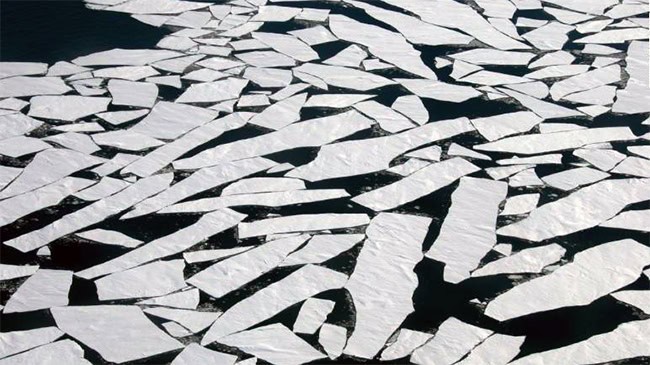Resolution 2020: Dylan Poirot Canton, SBB Dance, The Follow Through Collective
Posted: January 25th, 2020 | Author: Nicholas Minns | Filed under: Performance | Tags: Dylan Poirot Canton, Greta Gauhe, Greta Thunberg, Marta Stepien, Resolution 2020, Sasha Vallis, SBB Dance, Shaquille Brathwaite-Blaggrove, The Follow Through Collective | Comments Off on Resolution 2020: Dylan Poirot Canton, SBB Dance, The Follow Through CollectiveResolution 2020: Dylan Poirot Canton, SBB Dance, Follow Through Collective, January 21

The starting points for this evening’s trio of works are fundamental to the health of a society: family, housing and environment; they collectively throw out questions on life and death while leaving the answers to float. Dylan Poirot Canton’s Father’s Flower is a psychological portrait of ‘what it means to live up to a father’, SBB Dance’s 14.06.17 explores the stories around the Grenfell Tower tragedy, and Follow Through Collective’s 1 Click Away examines packaging waste in our online economy. All the works have a keen emotional sensibility towards the subjects they confront, but ironically choreography sometimes gets in the way.
Of the three works, Canton’s is the most intimately geared to the body, through which he experiences and explores the complex relationship with his father; he merges choreography with film, timing his entrance to a grainy moving image of a distant memory. He also uses his voice, but the clarity of words is at times sublimated to the colour and texture of emotion; it’s both frustrating (not understanding what he is saying) and moving (in the way his emotional utterances merge with his movement). Nevertheless, there are a couple of audible maxims — ‘A winner never quits and a quitter never wins’, and ‘Don’t hit a man when he’s down’ — that serve as a gauge of tough love. Father’s Flower is improvised, and the intent of Canton’s portrayal is vivid enough to imbue his movement with a search for form rather than for resolution.
In 14.06.17, Shaquille Brathwaite-Blaggrove quickly and effortlessly enters into the horror of the Grenfell Tower tragedy through haunting, in situ recordings of witnesses to the conflagration; his focus is on the absence of bodies, and any choreographic image is up against the unequivocal horror of this stark reality. One that succeeds is Sasha Vallis repeatedly miming the opening of a door; it’s a simple, everyday gesture, but superimposed on the sound of the Grenfell Tower flames it is an eloquent portent of disaster: inhabitants on the upper floors were told by the fire department to remain in their flats, and to keep the doors shut. Brathwaite-Blaggrove also delves into a caricature of then prime minister Theresa May’s reaction to the tragedy; it is crude but it works because there is an element of truth to its twisted satire and because dramatically it removes us from the scene to concentrate a justifiably angry focus on the government’s calculated inaction. Where Brathwaite-Blaggrove weakens his otherwise inspired treatment of the disaster is in the choreography for his quartet of dancers; it seems to come directly from the studio with little bearing on, or relation to, the depiction of tragedy.
Last year at Resolution, Greta Gauhe presented Drowning, an imaginative polemic on marine pollution; this year she is back with another environmental rant, albeit light-hearted, on cardboard waste: 1 Click Away. The approach is to let the boxes do the talking, and Gauhe’s choreography for her four dancers is focused on enhancing their eloquence. But in making the inanimate boxes the principal characters, 1 Click Away inevitably implicates not only their warehouse sorters, packagers and dispatchers, but also the shoppers whose collective proclivity for online purchases has clicked up a proliferation of cardboard waste. 1 Click Away is not self-righteously didactic but Gauhe gently eases the audience into participation and self-awareness at the beginning of the work by asking them to pass boxes from the back of the auditorium down to the stage, where Marta Stepien unpacks them and discards the containers. The other three performers rush to organize the boxes into a giant wall of cardboard. All that Stepien retrieves from the boxes are four t-shirts printed with work-ethic mottos that the dancers put on; they are now Make History, Work Hard, and Have Fun. Gauhe’s t-shirt is imprinted with the Amazon smiley. All four disappear behind the carboard wall and burst through it, redistributing, rearranging and rebuilding the boxes, which is the active choreographic task of the entire work. An inspired piece of theatrical anarchy is to pile up a line of boxes to block the view of the front row of the audience.
In its absurd and whimsical treatment of an environmental hazard, it is a shame 1 Click Away could not have been paired with Alka Nauman’s Be Fruitful & Multiply at Chisenhale in December; both works give the audience room to reflect on a topic that, thanks to the other Greta, is continually challenging us to rethink our environmental choices.
